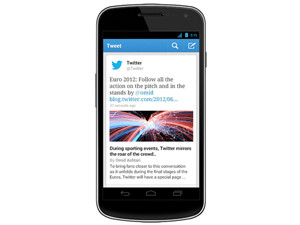
Twitter has announced new updates to its Android and iOS apps, as well as its mobi site. The update is focused on improving content discovery and impacts the Discover, Search and Connect tabs.
Twitter's director of product management, Esteban Kozak, says: "This release provides a single stream of content in each tab, so you can better find what's most important to you when you're on the go."
The Discover tab now features new previews of trending topics and content at the top, and all tweets, activity, trends and suggestions appear in a single stream. Twitter has also added a new search button to the iOS app (Android and iPad already had this feature). Search results now also surface "the most relevant mix" of tweets, photos and accounts in a single stream.
"To provide a simpler experience in the Connect tab, the default view is now Interactions, which shows you new followers, retweets and mentions," says Kozak, adding that this can be changed in the default settings.
Another update is the ability to click on links directly from any timeline. Prior to this, users have had to first click on the tweet to expand it and only then could they click on the link.
Youngin Shin, of Twitter's search-quality team, says the blended search stream is a "major shift" from how Twitter previously partitioned results (for example, tweet search versus people search).
Explaining the work that went into the update behind the scenes, Shin says: "A typical search scores items of the same type and picks the top-scoring results. In a blended search experience, this is not straightforward."
Shin explains in detail how content is ranked in the new search stream, with each piece of content being ranked and scored against various factors including "burstiness" (which refers to recent spikes in interest). Shin's full explanation is on the Twitter engineering blog.
Share